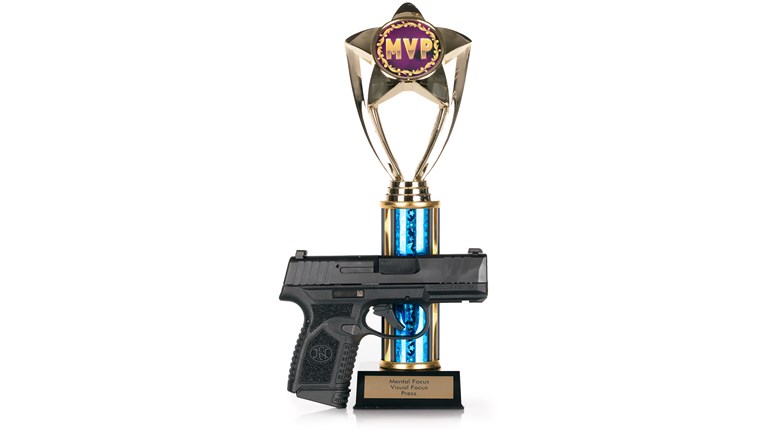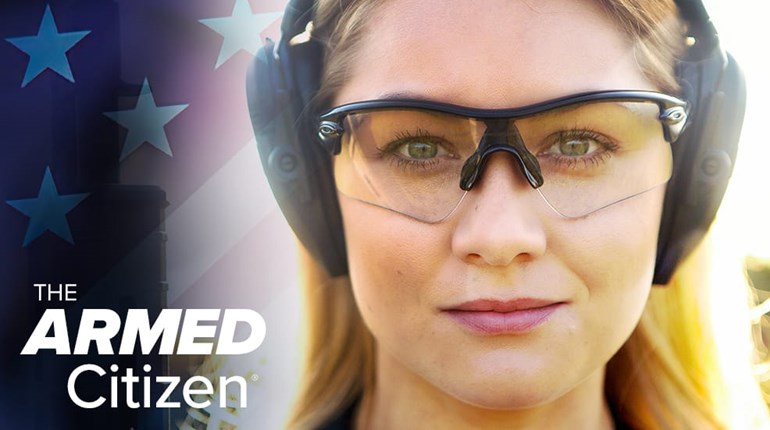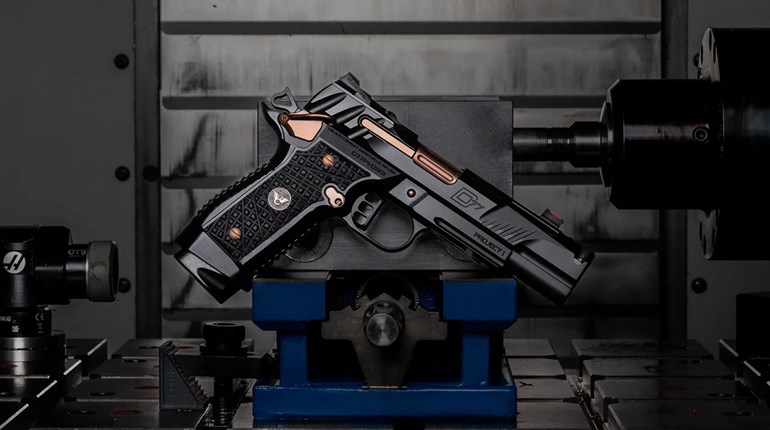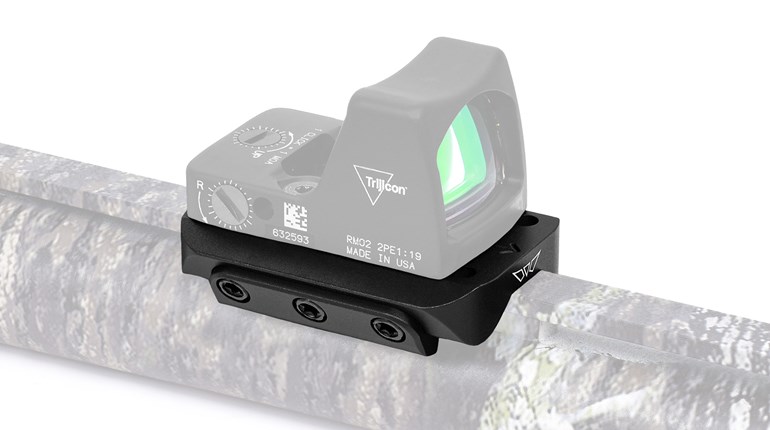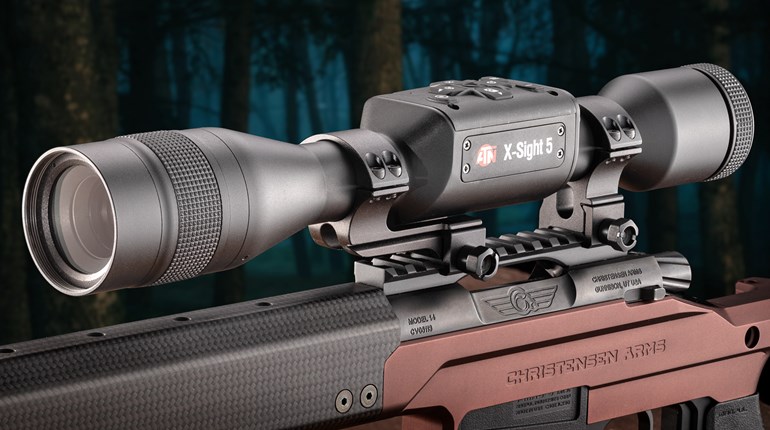
In the event of an active threat, your personal battle space can span from hundreds of yards to conversational ranges. These can be divided into three discernible distances: long range, confined areas and non-ballistic contact ranges. How you will defend your personal battle space depends on the distance and weapon(s) used by your attacker(s).

Long-Range Defense
At long range, a sniper can hit you from distances determined by the capability of the attacker and their weapon system. Long gunners, using a rifle, can strike far beyond or outside your line of sight using extreme distance, concealment, position, camouflage, etc., which means you may not be able to see them. Your defensive options at long range and under these extreme conditions are to identify the impact area and immediately seek cover (cover is anything of substantial thickness or material durable enough to stop a rifle round, such as a concrete wall or steel column). Use your sensory input to confirm that it is gunfire. Take that golden tenth of a second to orient to the direction of incoming rounds, as you do not want to inadvertently run into the hailstorm.
It’s also a good idea to always have a compact bleeding/gunshot-wound trauma kit (including a tourniquet) on hand. Stopping the blood flow is one of the most-important steps you can take in treating a gunshot or shrapnel wound. Keeping a few medical supplies on hand could save your life, or the life of another.

Confined-Area Defense
In the case of an active shooter in a confined area (not a sniper), who is moving on foot, there are a few more defensive options at your disposal than those limited by sniper fire. According to the recommended industry standard, your three options are to run, hide or fight. Your optimal defense of this battle space is to identify the threat area, either remove yourself and anyone with you from that area or defend your position from behind cover utilizing your own firearm. Contrary to those who adhere to the myth of political correctness, the very best way to stop a bad guy with a gun who is killing people is a good guy with a gun who is prepared to defend him or herself and other innocents.
Contact-Range Defense
An attacker wielding any non-ballistic weapon such as a knife or blunt object requires close-distance contact to be effective in causing serious injury or death. Time is a critical factor. The longer you stand toe-to-toe in front of an attacker wielding a contact weapon, the greater your chances of incurring injury and falling further behind the action/reaction power curve. The quicker you take control of the situation, the greater your odds on keeping control and gaining the initiative to move yourself and those with you to safety.
Controlling the Fight
To control a knife fight, a baseball bat fight or even a pillow fight, there are a few devices you can use to gain a tactical advantage in any violent physical altercation. You must first gain control of your immediate environment. To accomplish this, you must first control the time and space around you. More time and more space afford you more options and greater opportunities. Less time and less space relegate you to fewer options and less opportunity to solve the tactical problem. A valuable personal-security formula can be derived from this equation: More space = more time = more opportunity. The converse is also true: less space = less time = less opportunity.
You gain control over your opponent(s) at contact range by gaining more opportunities, which is accomplished by gaining more space, which buys you more time. But exactly how can you do that? By taking control of three components critical to your defense at contact range: distance, position and movement.

Controlling Distance
Distance is simply the measurement of space between you and your attacker(s). Referencing non-ballistic weapons, this space can be measured and split into two ranges: contact range (without moving his feet, your attacker can reach out with either arm and cut you with a knife, smack you with a bat or punch you in the face) and non-contact range, where he is standing at least an arm-and-a-half length away from you (it would require him to move his feet to reach you).
Being out of reach of your opponent(s), at non-contact range affords you minimal injury. However, finding yourself so close to your opponent that they can make physical contact with you means you are at contact range, which is where injury begins.
As there is a relationship between time and space, there exists a relationship between distance and injury. The further away you are from the attacker, the lower your risk of injury. The closer he gets to you, the greater the potential for serious bodily injury or worse. Imagine a guy with a knife: At the very onset of contact range, he can just barely clip your fingertip, but if he took one step closer and cut your biceps, you’ve sustained a greater injury. One step closer and he can now put the knife to your throat, which further increases your injury.
By moving away from the threat, you increase space, which buys you time, which buys you more tactical options. Using a technique I call the “Nike defense” is to simply point your heels away from the threat and run—the greater the distance, the greater your defensive options, including drawing, aiming and firing your defensive firearm.
However, it’s not always possible to put space between yourself and the threat. Your next best bet is to place something between yourself and the threat. Obstructions such as cars, trees, trash cans, furniture, etc. force your attacker(s) to move around them, which in turn buys you more time to make more distance. More time and more space buy you more options to solve the tactical problem.
Creating more space to include using obstructions to buy you more time works great in open spaces such a parking garages, open outdoor plazas, in a mall, etc. However, these options may not be available to you in certain situations. Engaging a threat in confined areas such as crowded restaurants, hallways, stairwells, elevators, etc., is a problem when creating space (or using obstructions) is not an option. If you can’t change the distance from your threat, you can certainly change your physical position relative to that threat.

Controlling Position
Imagine you’re standing directly in front of your opponent, who has a non-ballistic weapon in his hand, at conversational distance. This is not a very good place to be because you’re already at contact range, and aside from deploying his non-ballistic weapon, your attacker can punch or grab you with his other hand, deliver elbows, knees, round-kicks and a head butt—all without the need to move his feet (apart from kicking you, that is). Moving directly next to your attacker facing his left shoulder puts you in a more-advantageous position. However, the dominant position in any fight is getting to your opponent’s back. Directly behind your opponent, facing the back of his head, is the best physical position you can be in any fight. If you can’t change your distance from the threat or use obstructions, at least place yourself in a position of advantage.
Controlling Movement
To change either distance or position, you need to move. A moving target is always more difficult to hit than a stationary one. Someone swinging a baseball bat, trying to knock your head off, will have a much more difficult time crushing your melon if you keep moving.
Nearby where I teach at the SIG Sauer Academy in Epping, NH, is the New England Dragway. Some of the fastest NHRA cars run on that the track. Those speedy cars have the biggest and widest tires. Why? To make as much contact with the track as possible. To achieve maximum speed, you need stability. Humans don’t have wide tires, but we do have legs and feet that can be made stable. If you look at some of the very best boxers in history—Sugar Ray Robinson, Muhammad Ali, Floyd Mayweather, etc.—they were rock-solid on their feet, yet could move quickly and deliver powerful, effective strikes. How did they do that? By building a stable fighting platform.
Stable Fighting Platform
Building your stable fighting platform, like building a house, starts with a concrete foundation. Set your feet flat on the ground (maximum contact equals maximum control) about shoulder-width apart and directly under your hips. If you lock your legs completely straight and someone asked you to move left or right, what’s the very first thing you’d need to do? Yes, unlock your knees so that you could be readily mobile. The next step in building the foundation is redistributing your weight slightly forward on onto the balls of your feet as if you were preparing to open an extremely large, heavy door. In this position, your feet firmly contacting the ground shoulder-width apart, knees unlocked and weight slightly forward, you have built a solid foundation from which you can go to guns and/or move quickly. All this is good for below your gun belt, but what about your hands?
Since the dawn of time, when the first caveman slapped the second caveman, man has learned the hard way how to raise his hands up in protection of his most vital upper-body vulnerable target: his neck.
The neck is a conduit for the hydraulics (circulatory system) by which fluids must move upward through the neck to get to the brain. The neck is also a conduit for air (pneumatics) to get from the nose and mouth and into the lungs. Third, it is an electrical conduit for your computer to send signals via the nervous system to other body parts. Cut or crush the conduit and you shut down any one or possibly all three systems, hydraulics, pneumatics and electrical. The forearms are used to protect the conduit from damage.
Raising your hands up (palms facing you) to about cheekbone level, much like a boxer (keeping your elbows pointed down protecting your ribs) creates a natural barrier between incoming strikes and your all-important upper-body conduit. However, you don’t want to cover your eyes with your hands, because if you lose your sight, you’ll lose the fight.

Moving the Stable Fighting Platform
Now that you’ve built the platform, you need to move it—quickly—away from the immediate threat. There are two ways you can do that: either a walk-step (one foot in front of the other) or running, which most of us should have down pretty well by now, and the other is a shuffle step; a big step followed by little step. Rule of thumb for moving the stable fighting platform with the shuffle step is to first move the foot nearest the direction you want to move. If you’ve never done it, try step and slide right, left, forward and backward.
The advantages of the shuffle step at contact range in close-quarters combat are that it’s explosive and very powerful; the disadvantage is that it’s slow moving. The plus to walk-step is that it’s fast; the minus is that it’s not stable. In the world of fight control, you need to be comfortable with both of these maneuvers.

Ensuring your personal security against an active threat depends on many variables. However, the greater your assailant(s)’ range and weapon(s) capability (ballistic), the fewer defensive options you have. The closer the battle space (non-ballistic), the greater your defensive options. In either case, situational awareness plays a significant contributor and remains paramount in your defense. The sooner you can identify a threat, the greater your odds for solving the tactical problem of defending your personal battle space.












